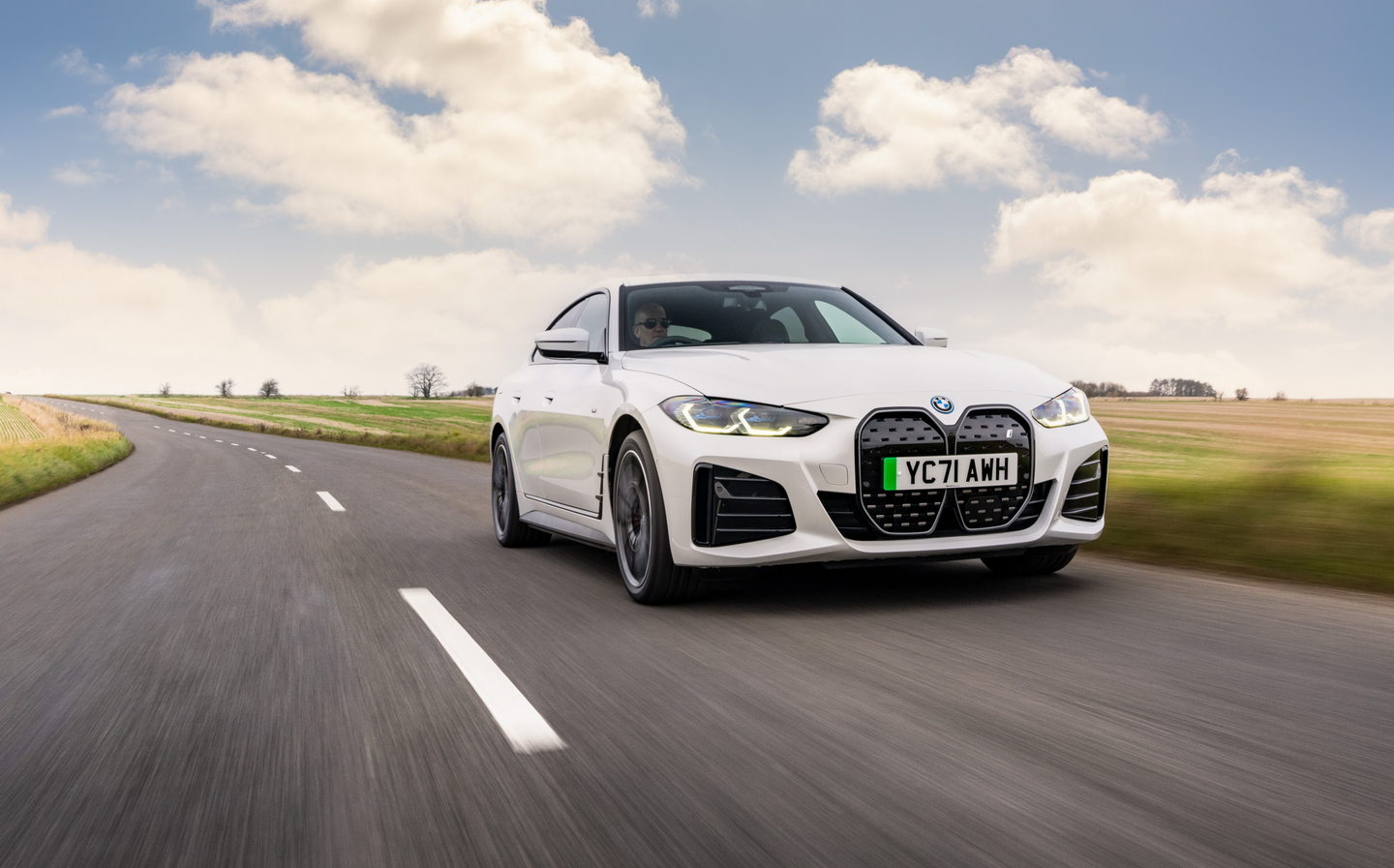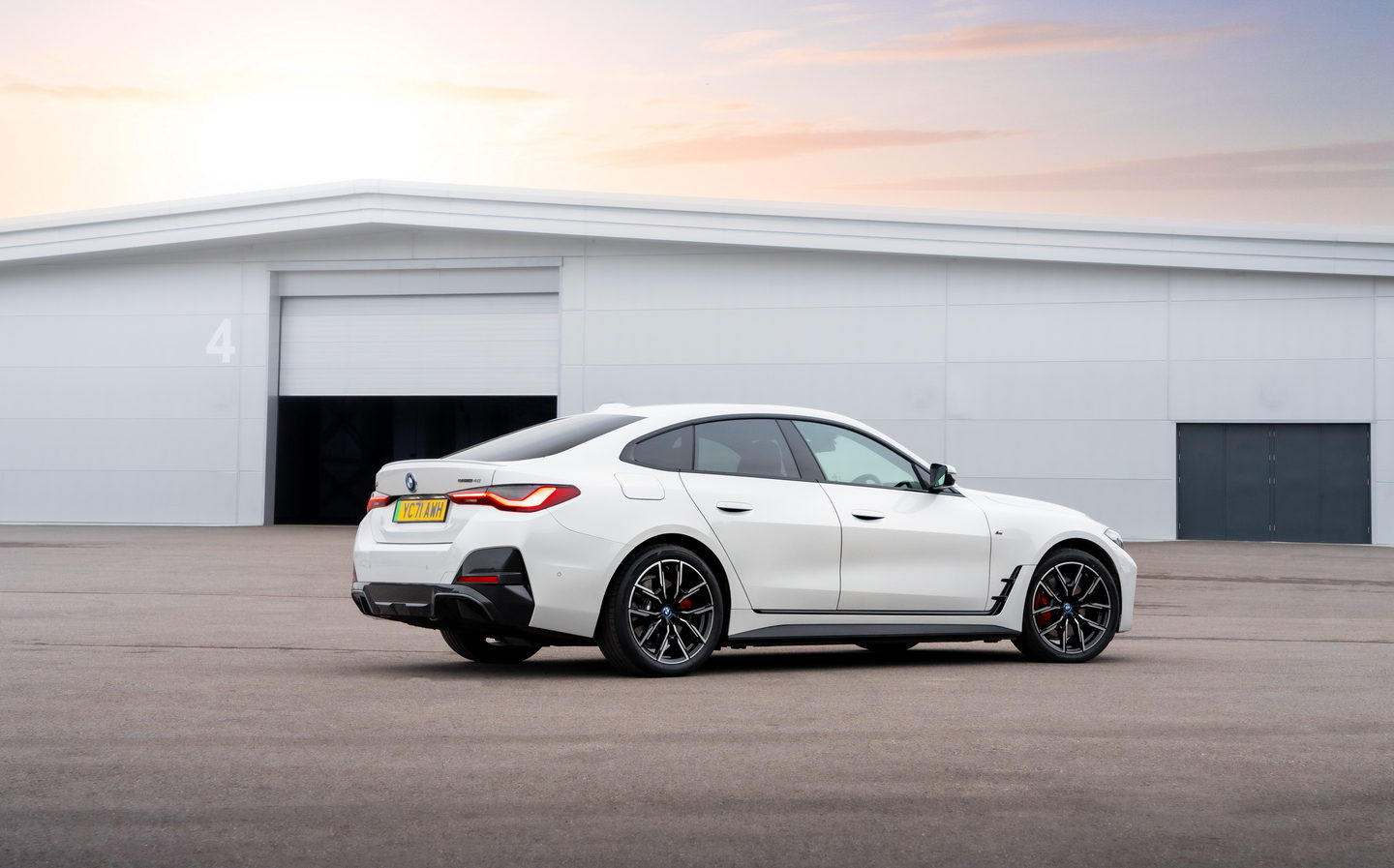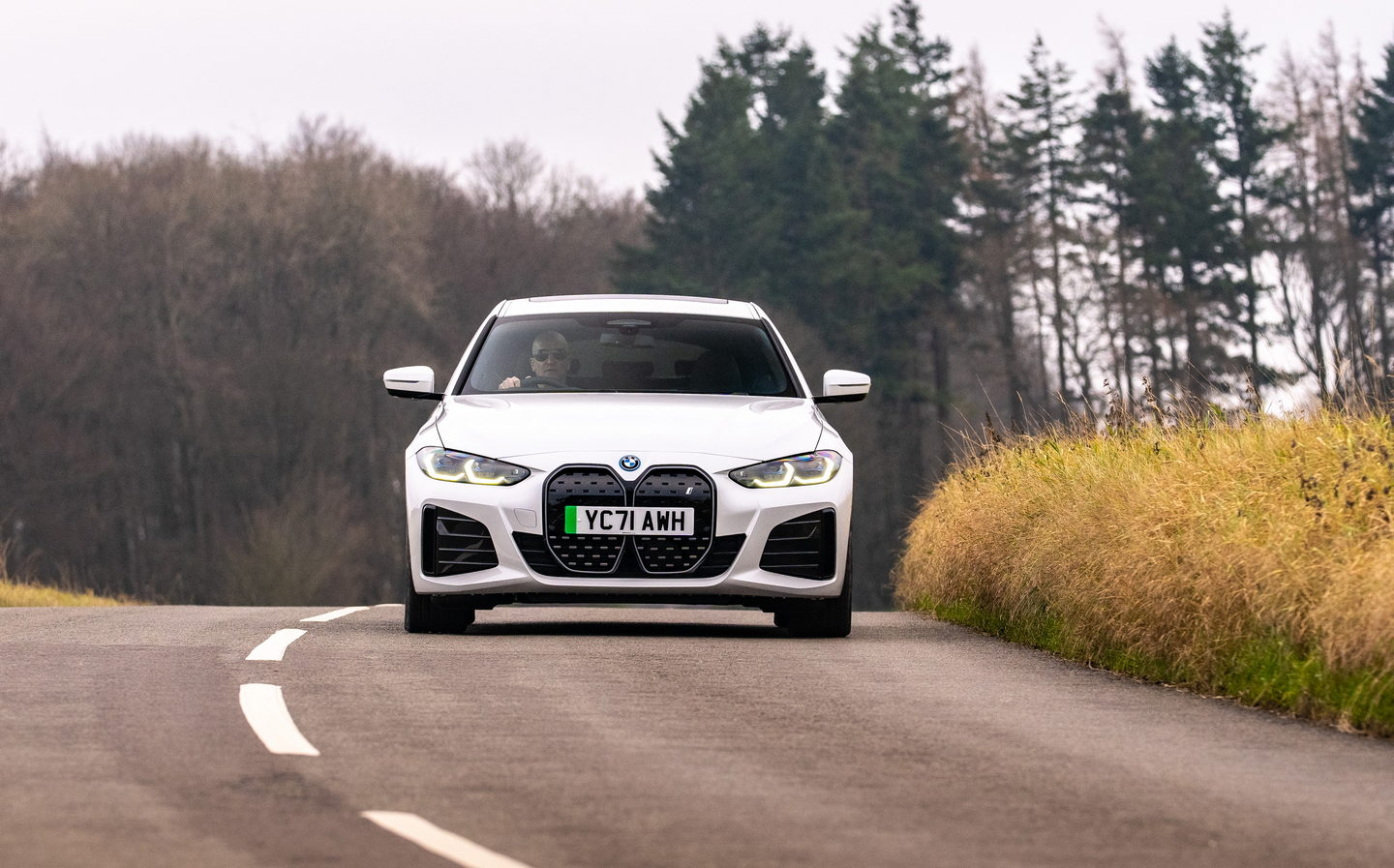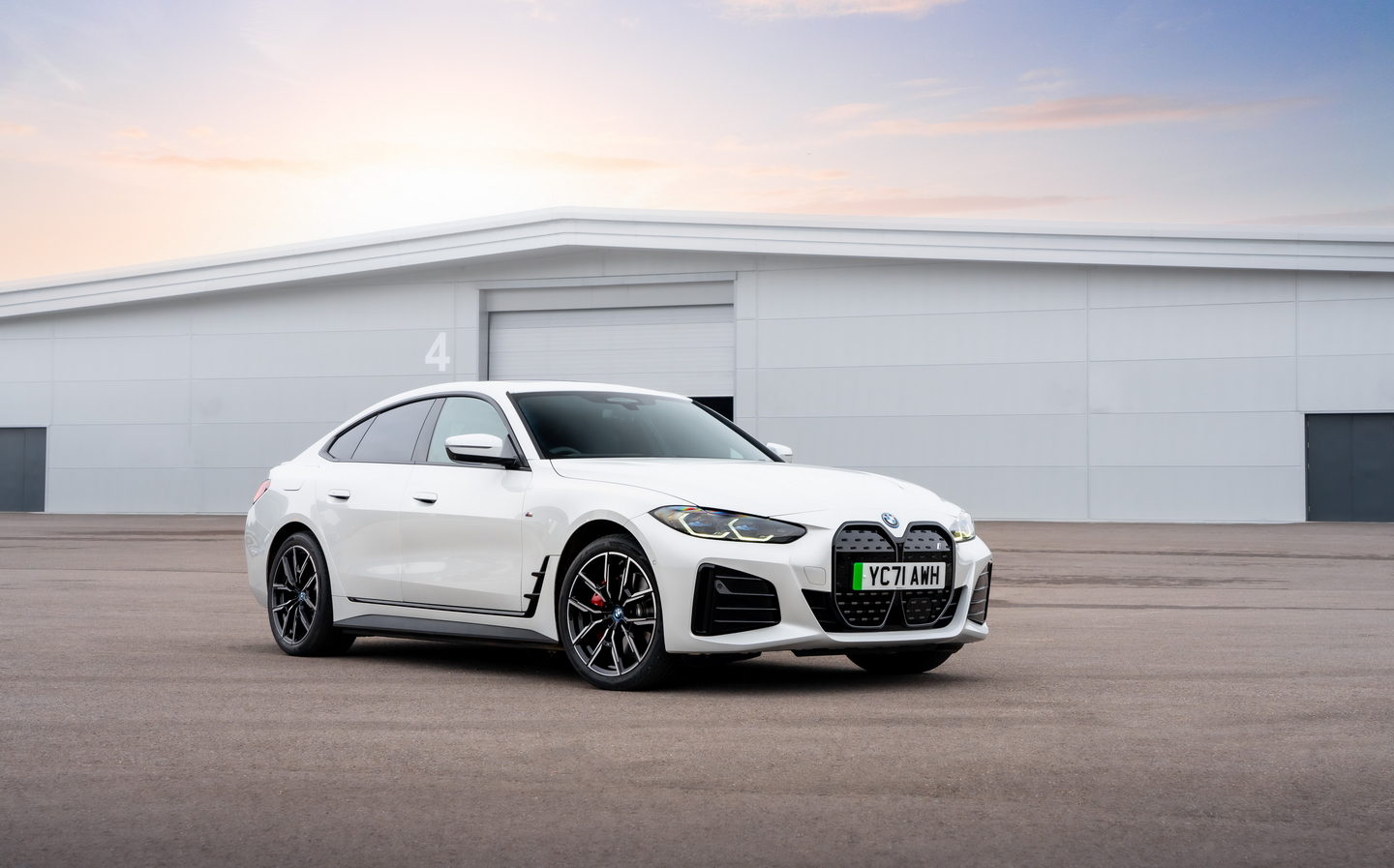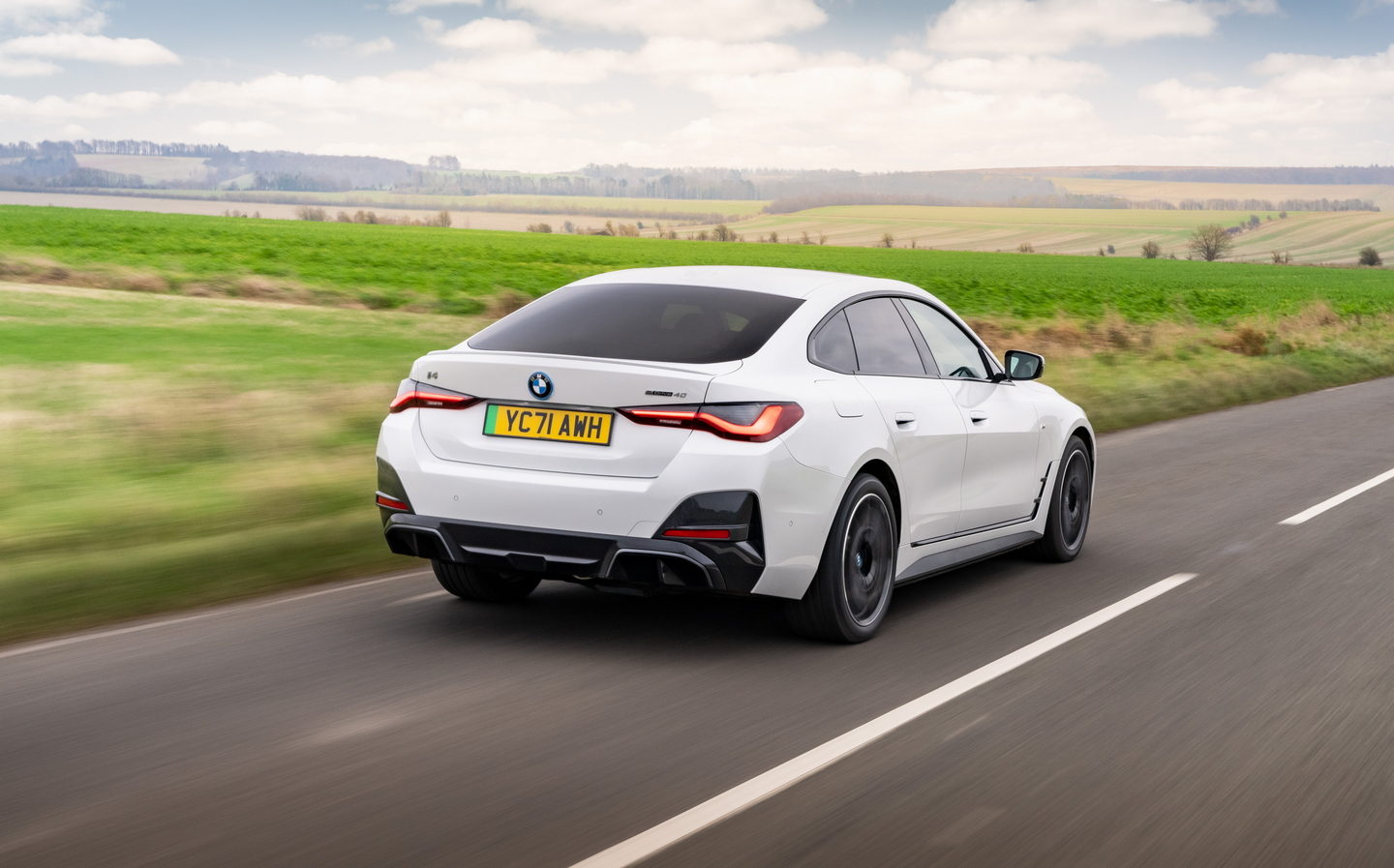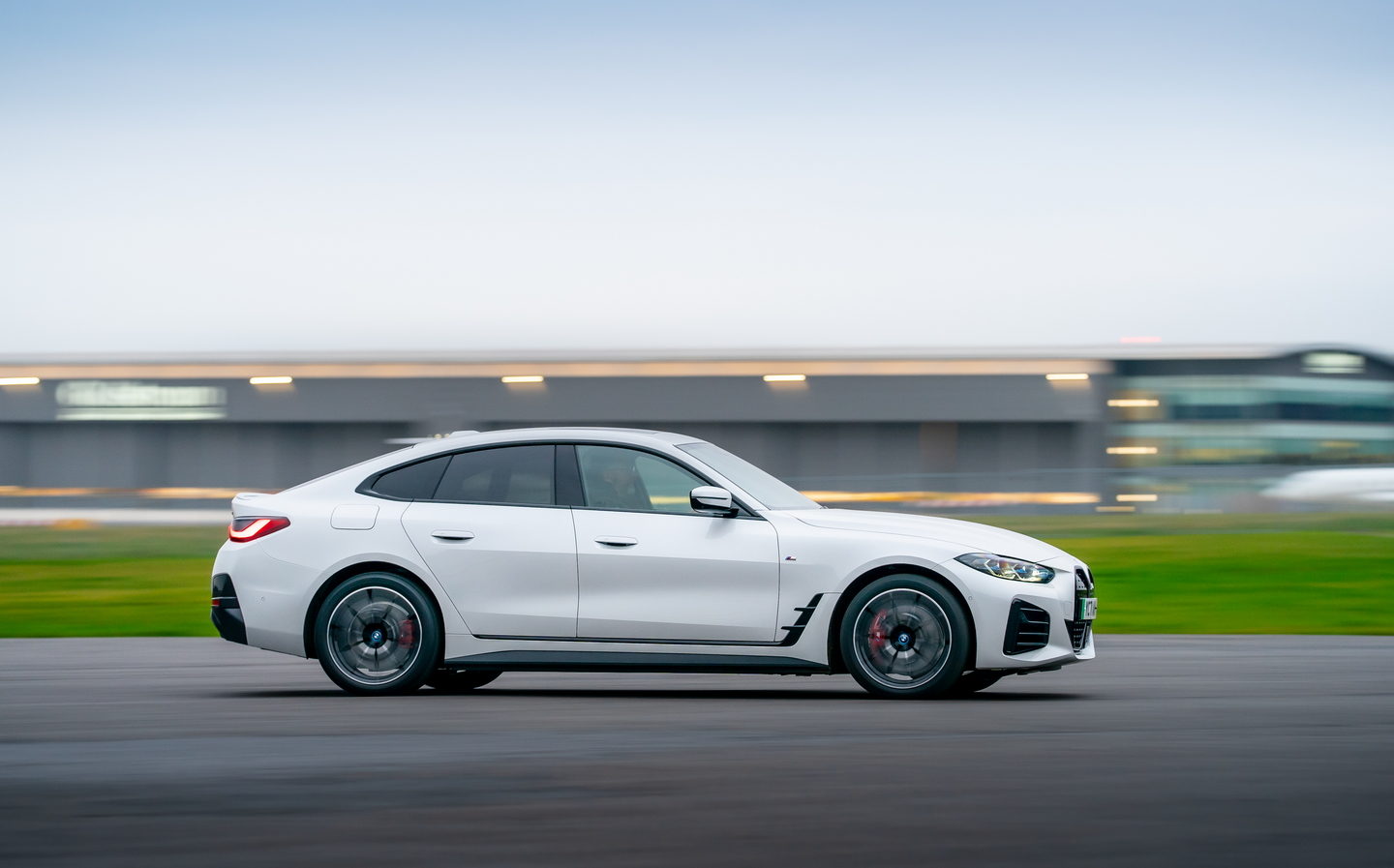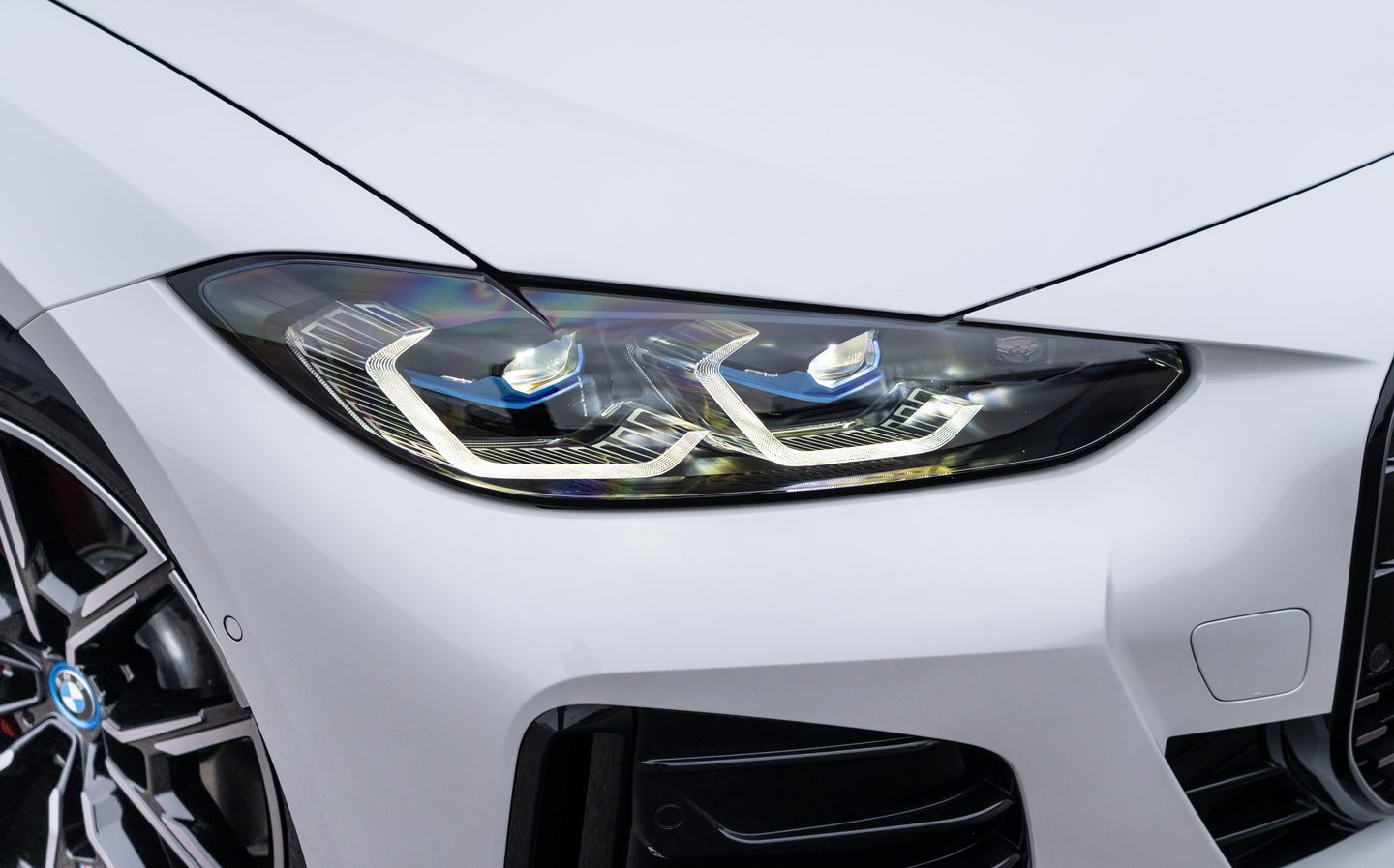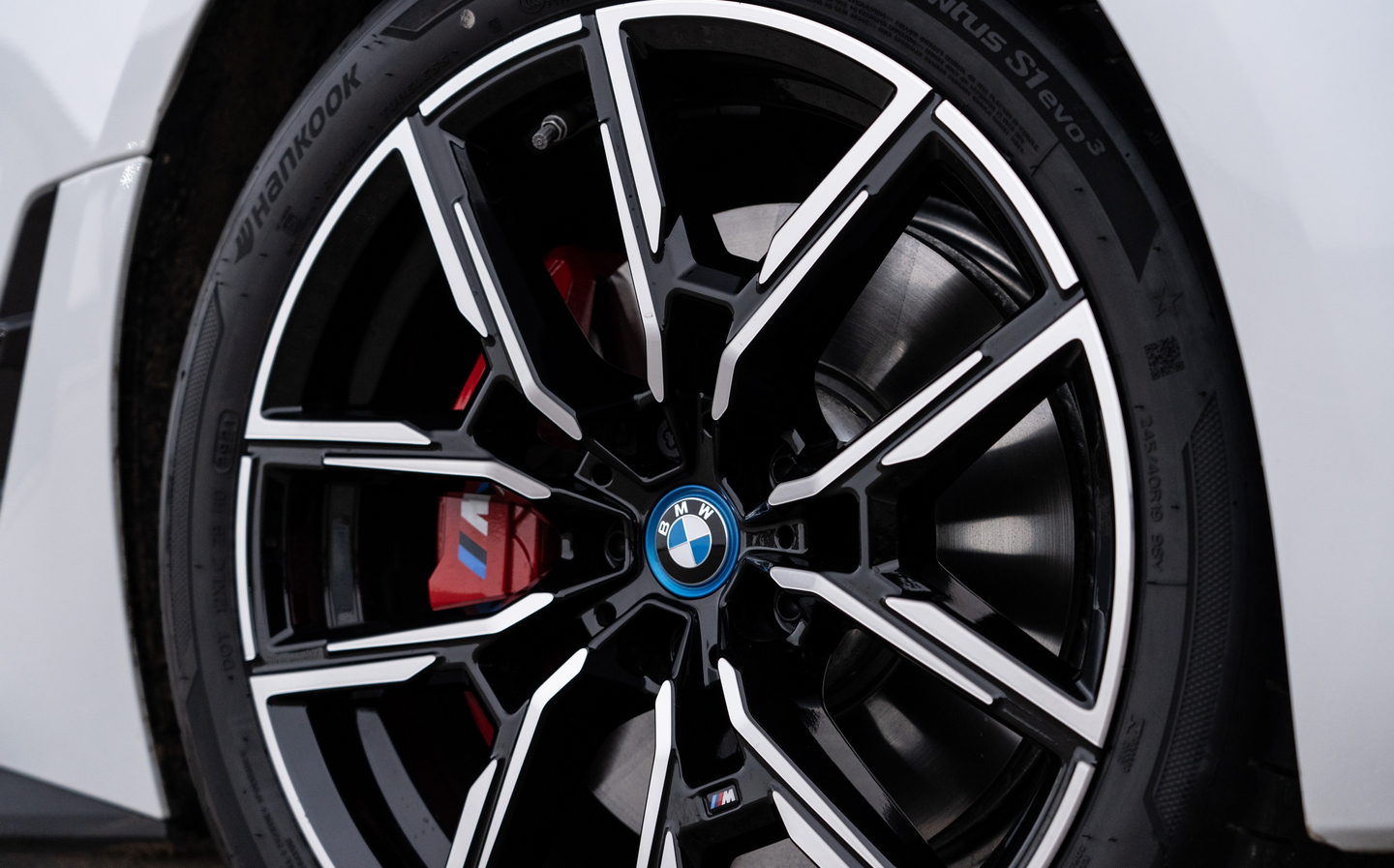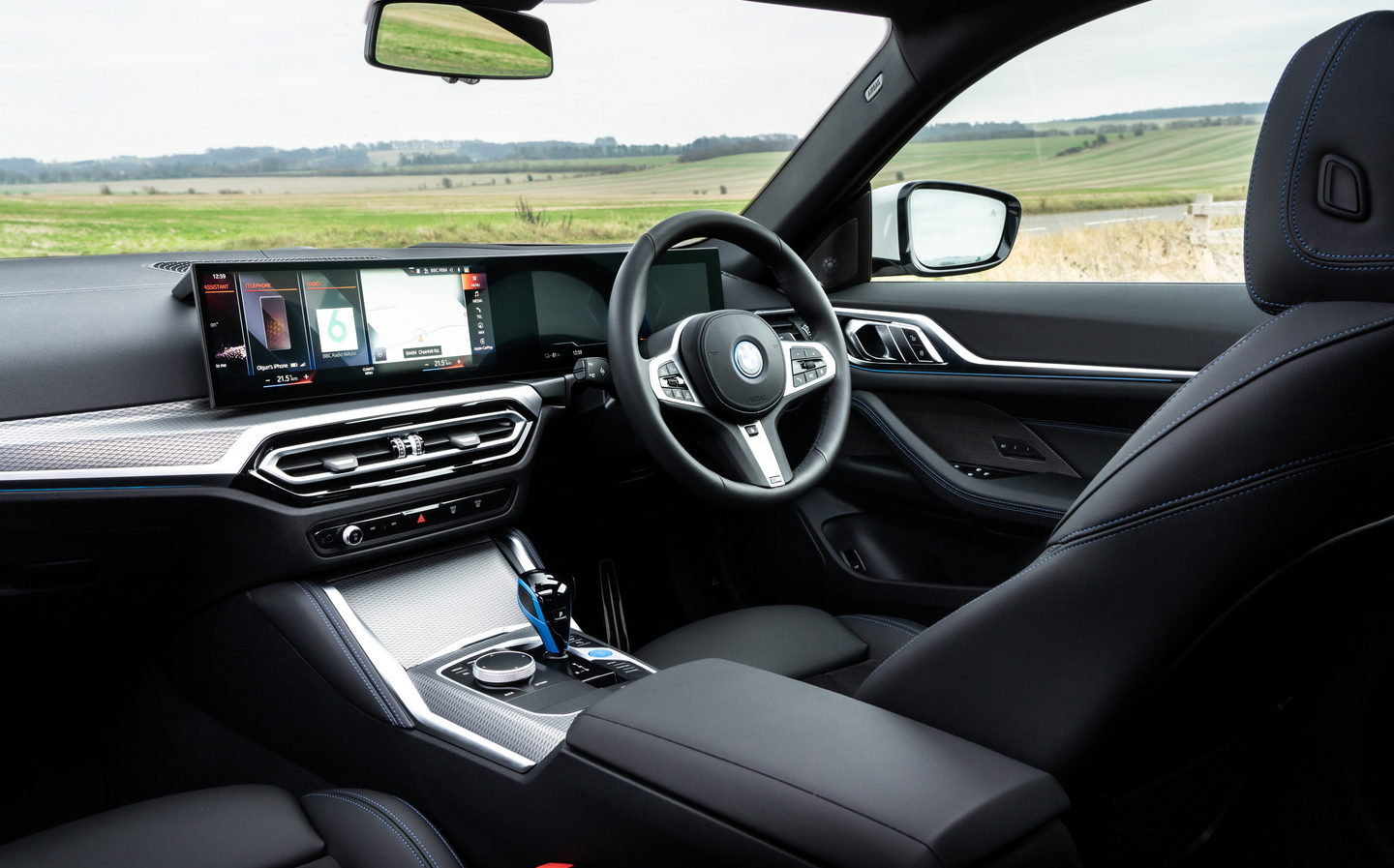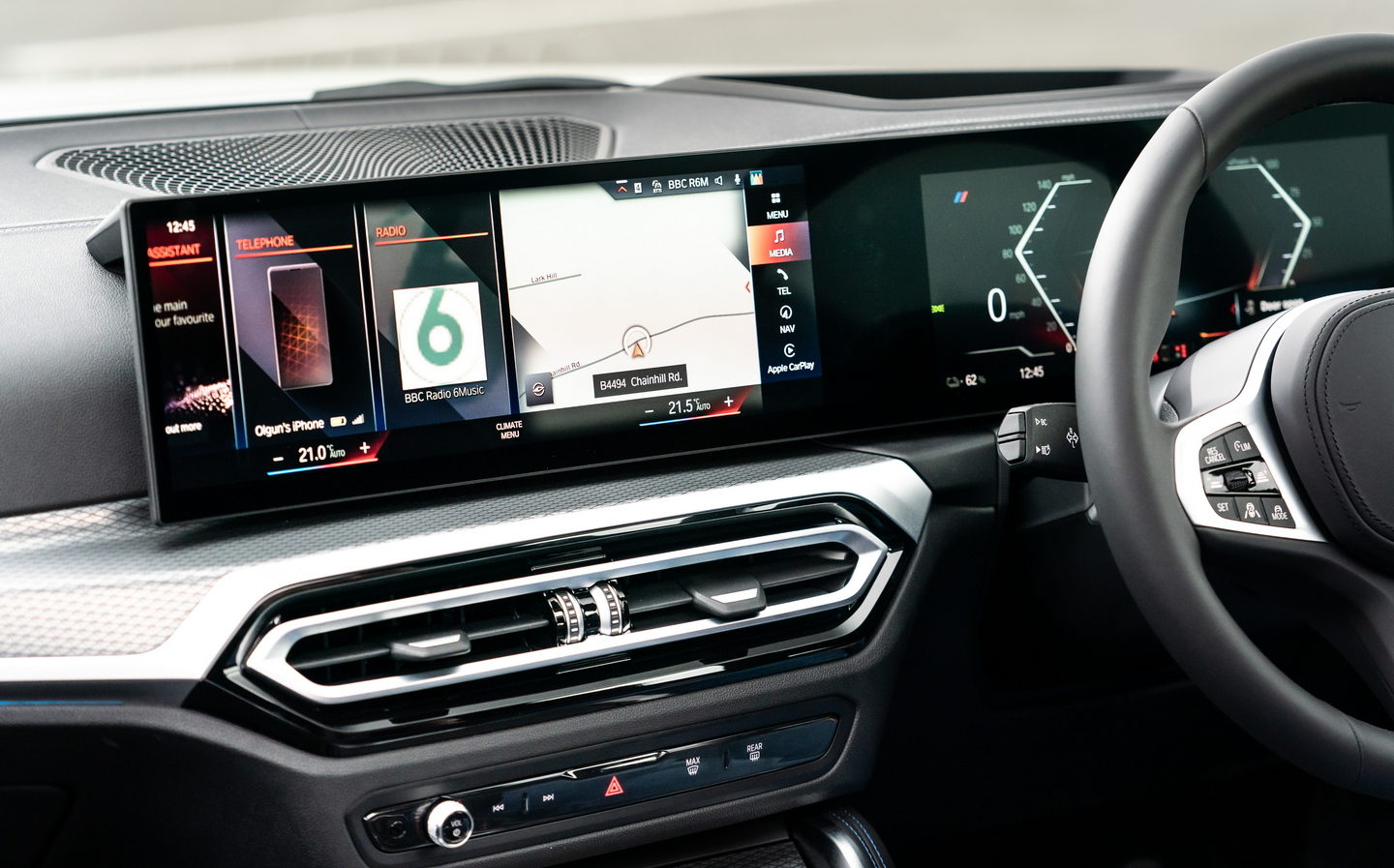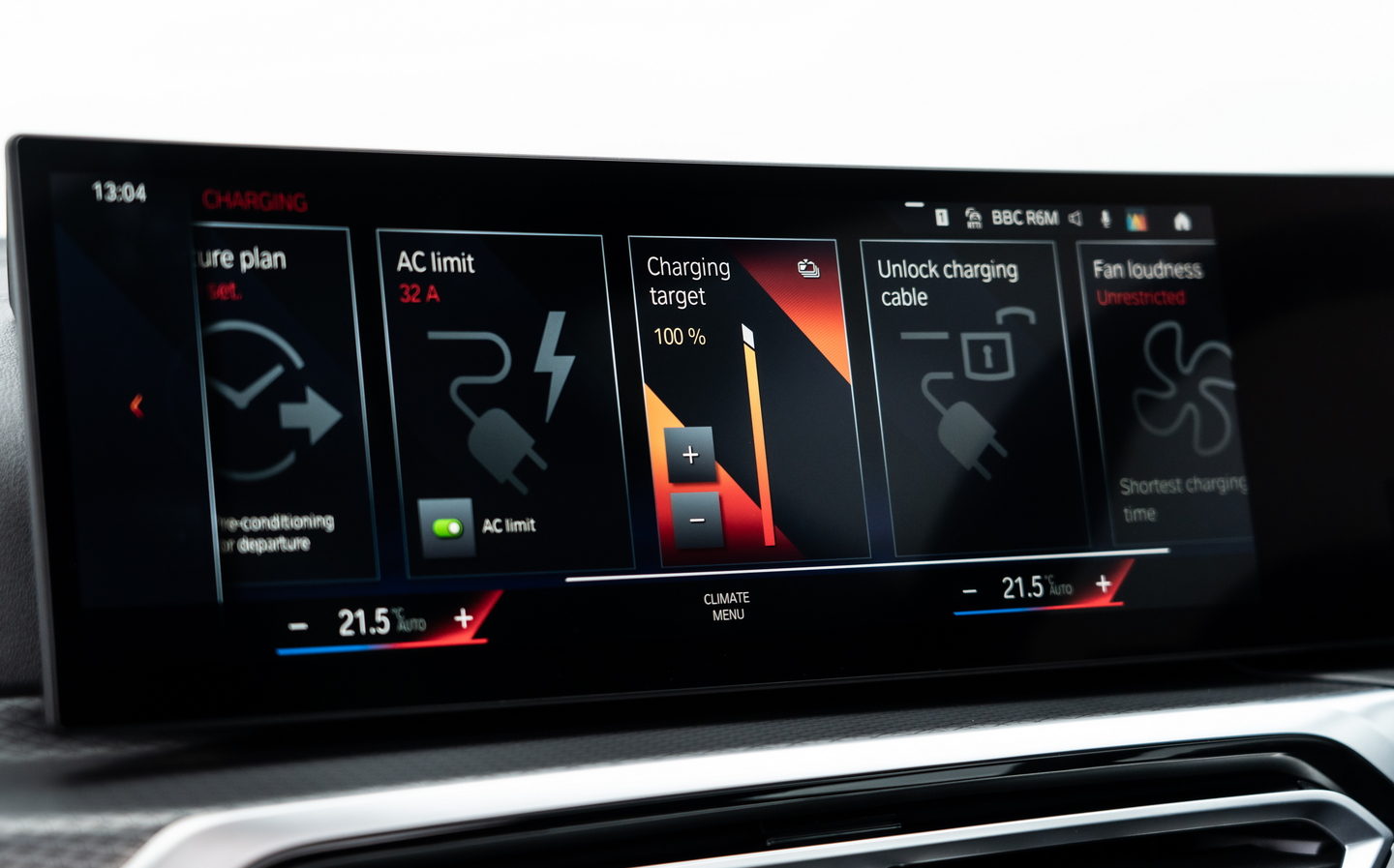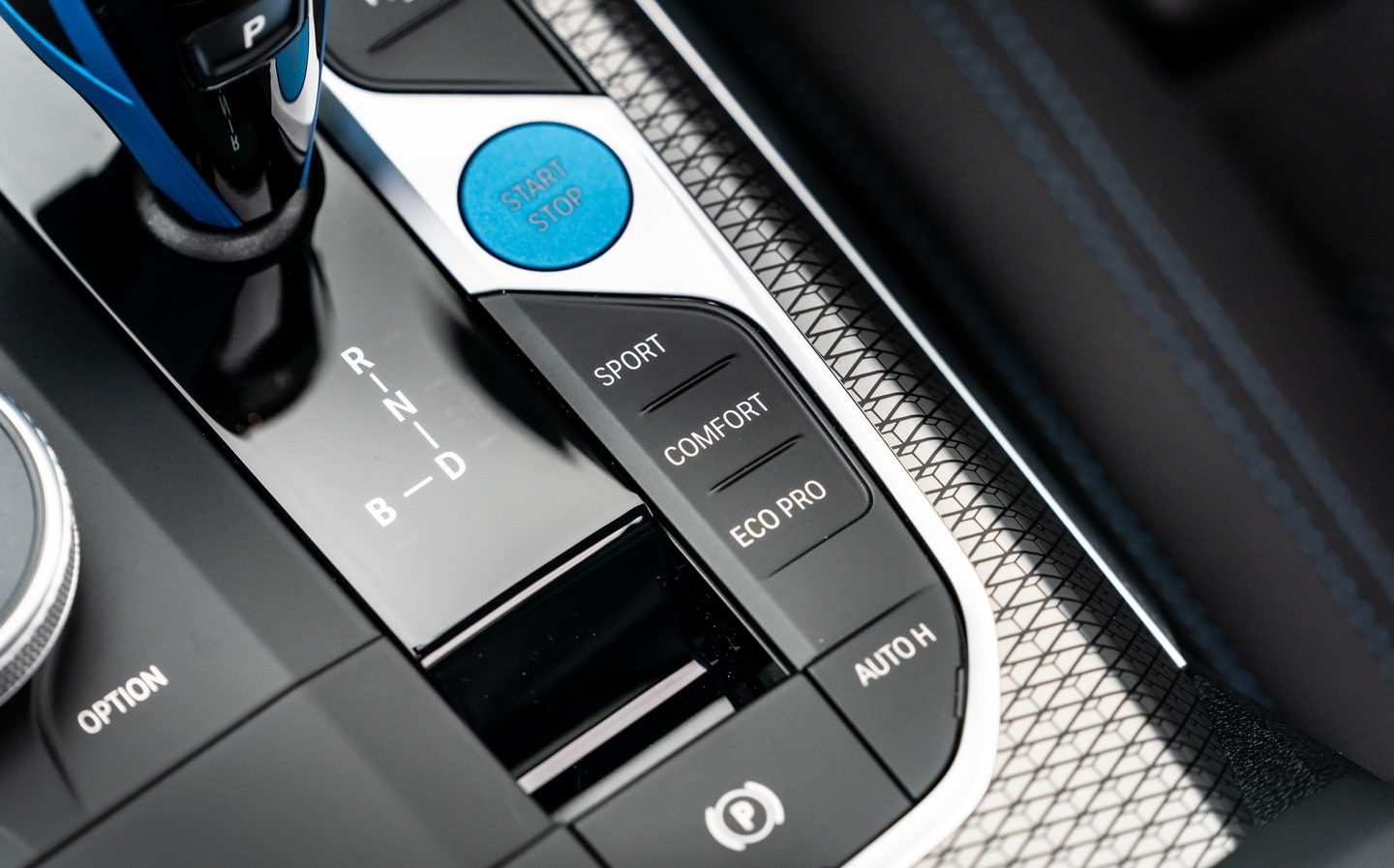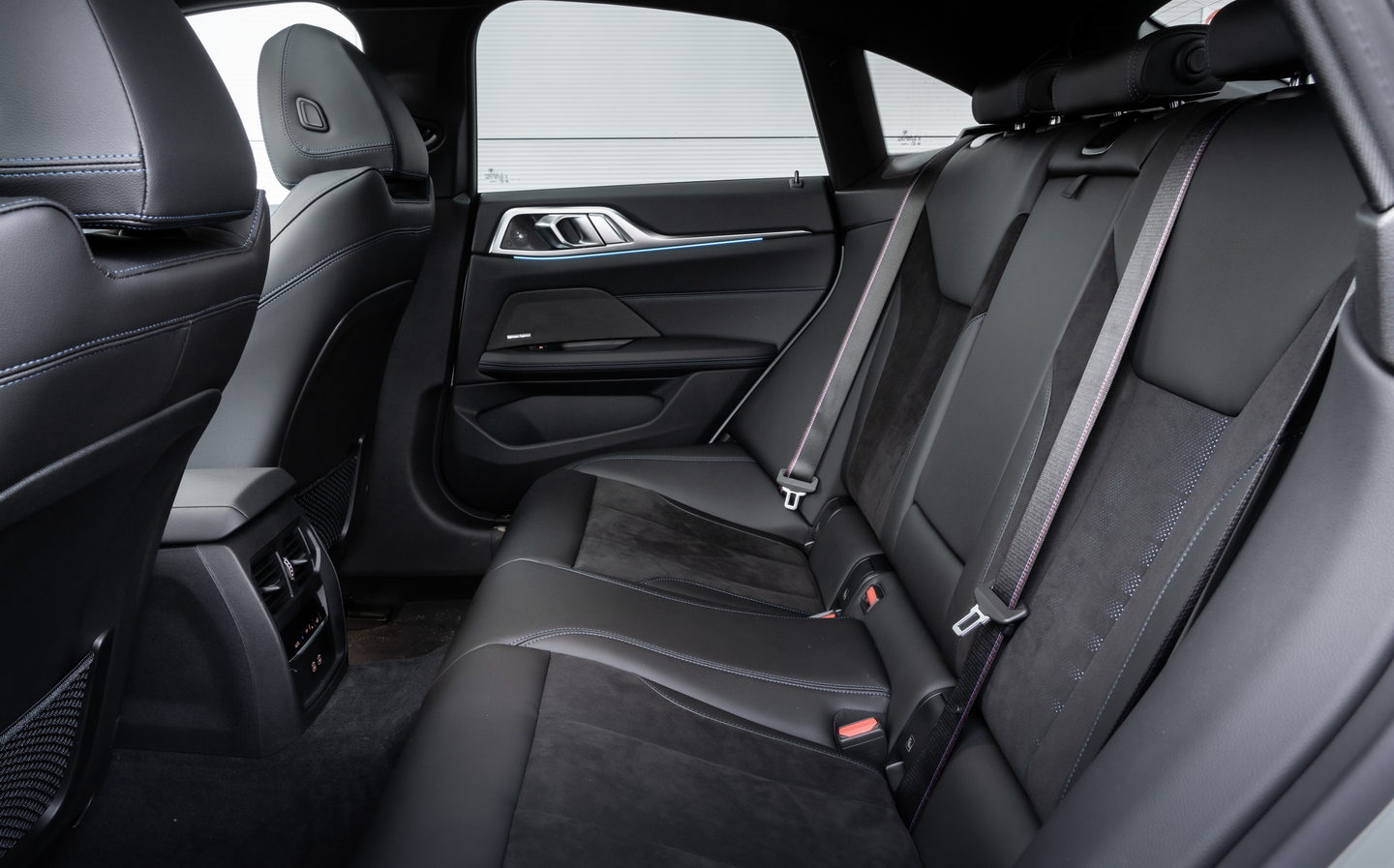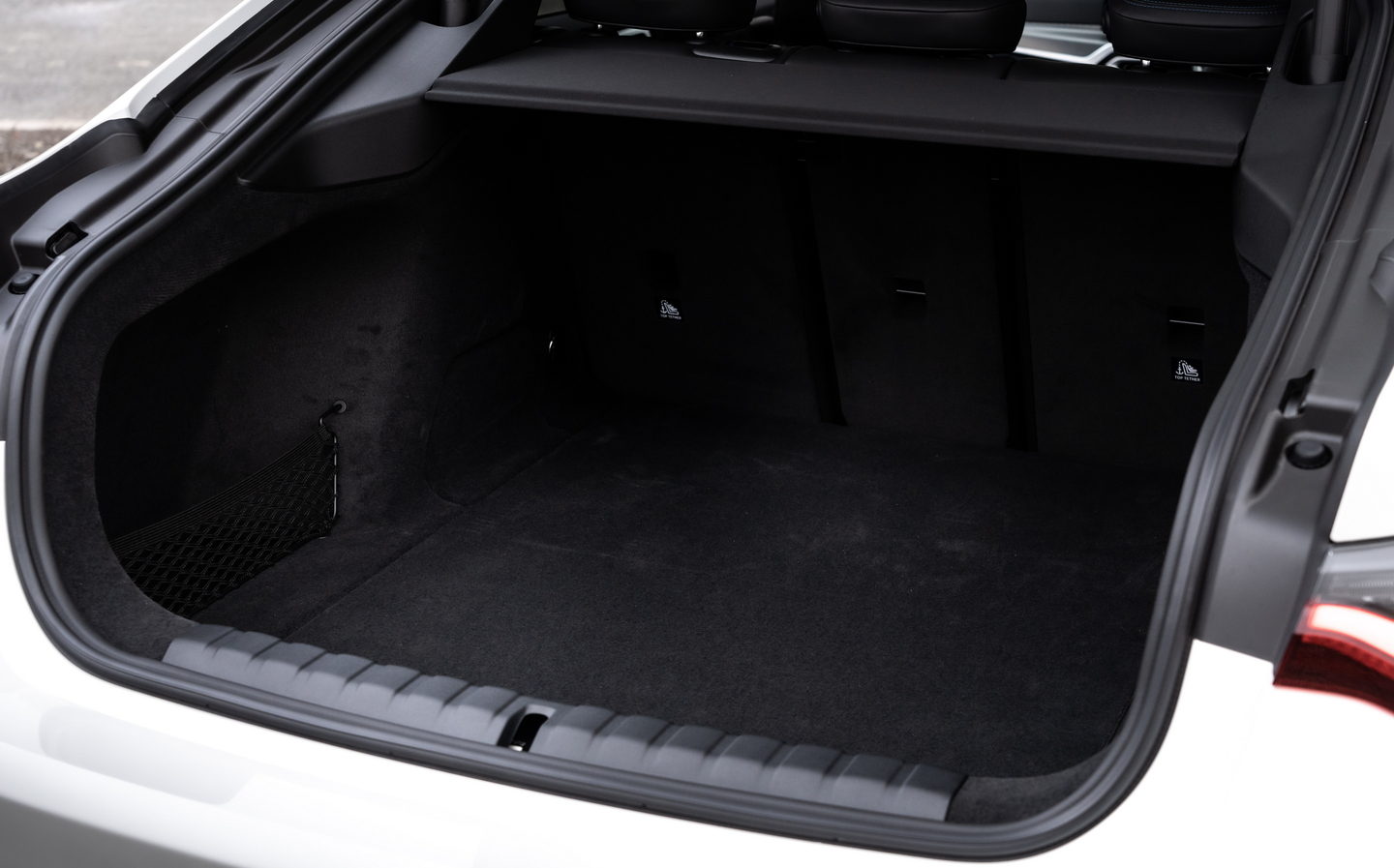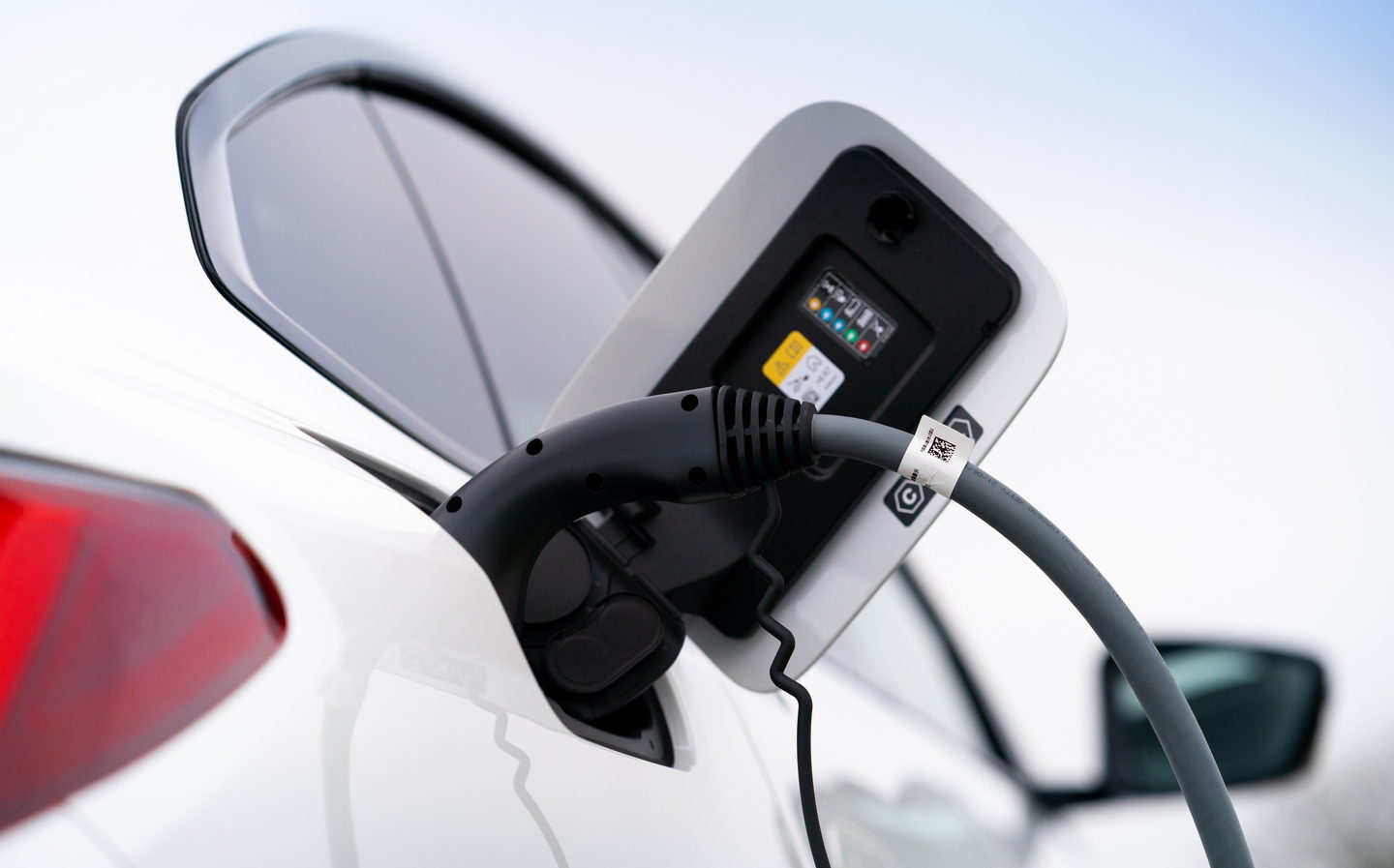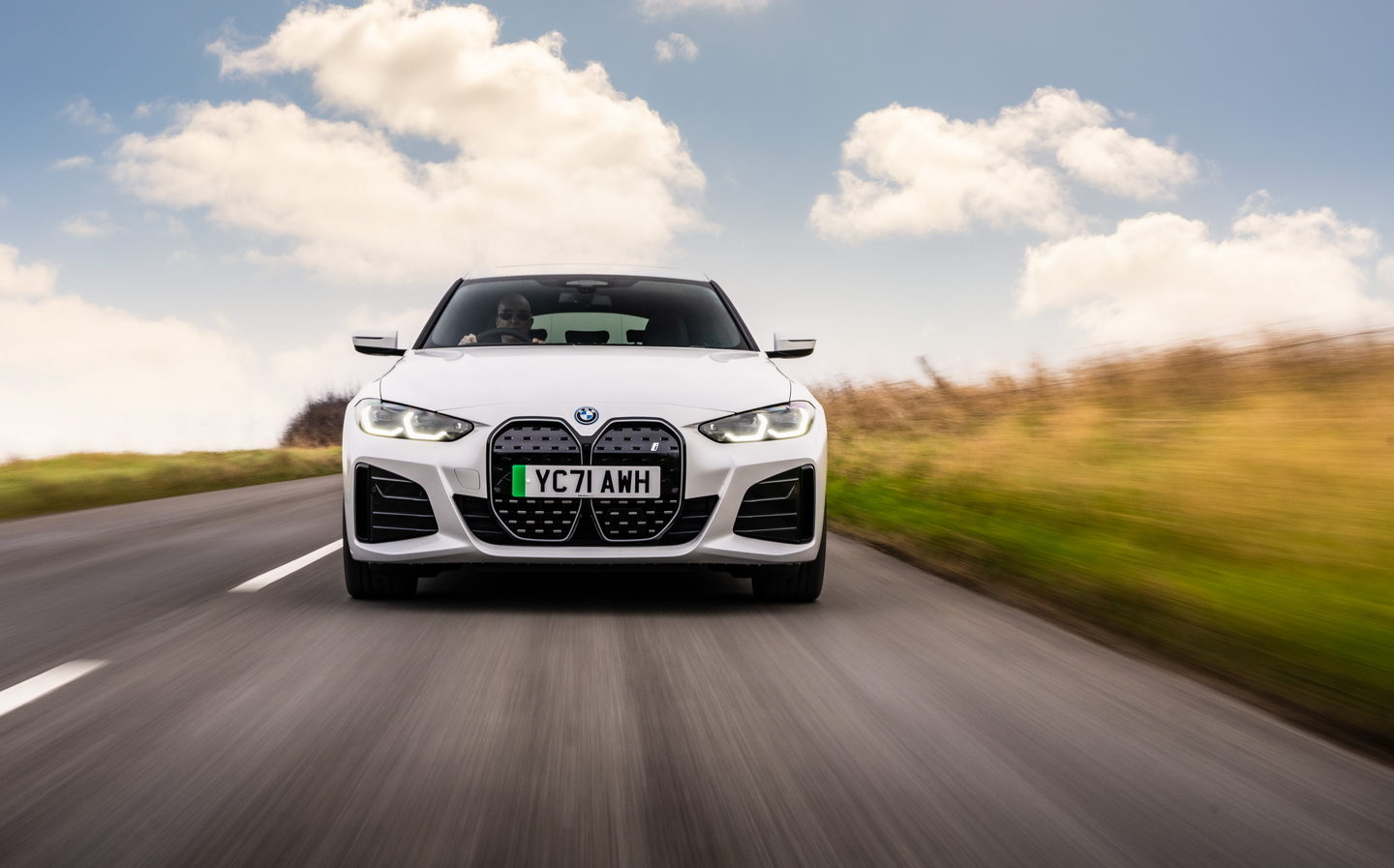BMW i4 eDrive40 review 2023: Mid-range premium electric car beats Tesla at its own game
A proper BMW that just happens to be powered by electricity
The BMW i4 somehow manages to be both very new and already established at the same time. By using the bodyshell from the 4 Series Gran Coupé, BMW has managed to build an electric car that merges the familiar characteristics of a German premium “fastback” saloon with the quiet efficiency of an electric powertrain.
Naturally, parallels will be drawn with alternative products from upstart brands Tesla and Polestar, while the Mercedes EQE was the Sunday Times Motor Awards Car of the Year 2022, so the i4 faces stiff competition.
But BMW is confident in its engineering and the i4 promises customers an appealing mix of quality, driving pleasure and range. To find out whether it can really deliver, we tested the i4 with the mid-range eDrive40 powertrain that’s set to be the best seller.
Exterior design and rivals
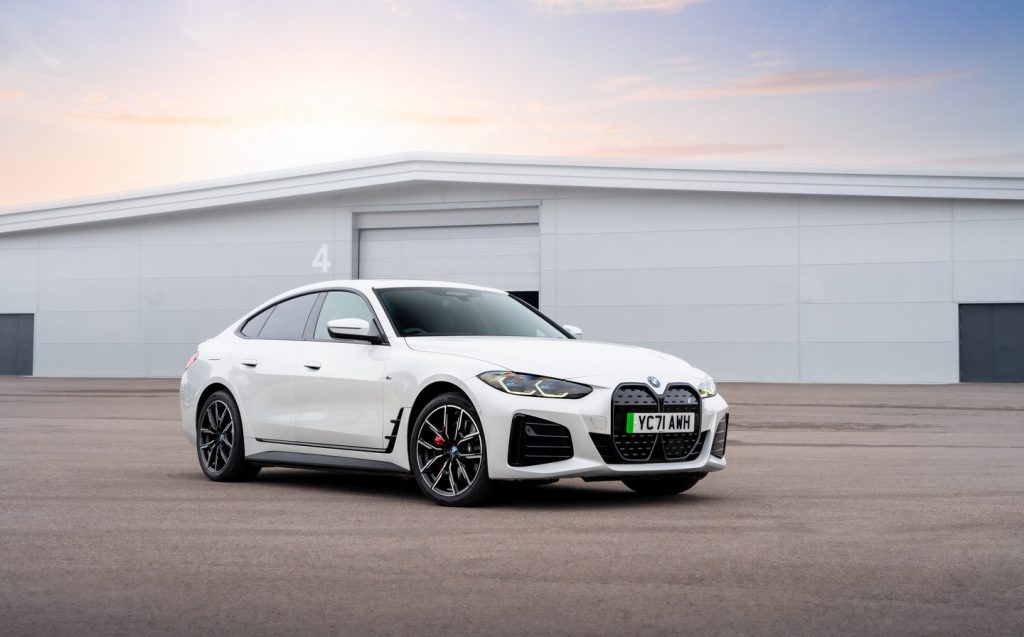
For the casual observer, it’s easy to mistake an i4 for any of the more conventional 4 Series Gran Coupé models, but then it would be, because they’re nigh on identical. Only if you spot the modifications to the grille and the lack of any exhaust pipes would you realise you were looking at the all-electric variant.
For those who like to shout about their eco credentials, such subtle design might not appeal, and alternatives such as the Tesla Model 3 and Polestar 2 might have a greener image. But if you’re after an executive saloon that just so happens to be electric, the i4 is a great place to start.
In fact, we think it looks slightly better than the standard 4 Series because of BMW’s tweaks to the front end. By fitting panels in place of the 4 Series’s ‘Bugs Bunny’ grille, the nose somehow looks less divisive.
But it isn’t all good news. Perhaps to try and win back those who think electric cars should look different, BMW has insisted on fitting blue trim to the standard i4, including blue lines around the grille and along the bottom of the doors. You can get rid of the blue lines, thankfully, as a no-cost optional extra (as above), or by moving up to a higher specification model.
Blue lines or not, the i4 still looks and feels like a premium saloon should, and while the front may not be to everyone’s taste, there’s plenty to like about the fastback styling, which allows for a hatchback-style boot lid without spoiling the sporty image. And if you go for the hot i4 M50 model, it gets even more muscular.
Interior and practicality
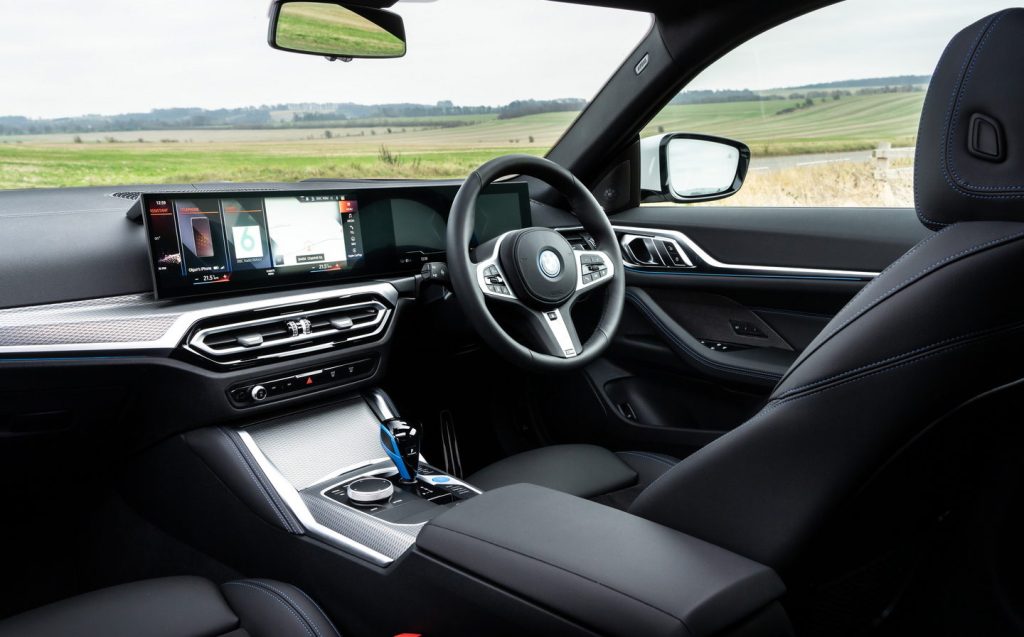
As with the i4’s external design, the interior is pretty much identical to that of the latest 4 Series. That means you get BMW’s Curved Display, which stretches across the dashboard and combines the digital instrument display behind the wheel with the central touchscreen infotainment system.
Because the new system includes the climate control functions, BMW has managed to more or less eliminate buttons from the dashboard, though there’s still a volume control knob for the stereo and next to the drive select lever remains the iDrive rotary controller for the screen, which some drivers will find easier (and less distracting) to use while on the move… though it’s not perfect (see below).
The result is a minimalist environment, but a high-quality one. BMW’s usual attention to detail means everything fits together perfectly and there are some lovely materials on display, including some smart chrome trim around the air vents and centre console.
That leaves just two gripes. The first is that full leather (or pleather) upholstery is not fitted as standard, which seems a bit stingy, and the second is with the blue trim that reappears on the starter button in the centre console. Like the blue exterior trim, it looks a bit too cheap and in-your-face.
And while cabin space is generally decent, rear passengers over six-feet tall might find their heads up against the roof. Beware especially of M Sport models with the darker roof lining, too, because that can make the back seats feel less spacious than they really are.
Those small complaints aside, there’s ample legroom for those in the front and back, and there’s no less space inside than you’d find in a 4 Series Gran Coupé. For those who do fit, the i4’s cabin is a great place to be.

There are no complaints about the boot, though, where the i4 somehow gets exactly the same 470-litre luggage space as the standard 4 Series Gran Coupé despite housing an electric motor under the boot floor. The hatch back makes it easy to load bulky items, too.
Fold down the rear seats and the space expands further, to a total of 1,290 litres. That makes it noticeably more practical than the Polestar 2, though the Tesla Model 3 is more capacious.
Technology and safety
The i4 was one of the first BMWs to use the company’s latest-generation in-car technology, which is now being passed around the rest of the range. That means the one-piece Curved Display in the dashboard houses a digital instrument cluster and a conventional touchscreen infotainment screen, both of which are an improvement on the screens previously fitted to the 4 Series.
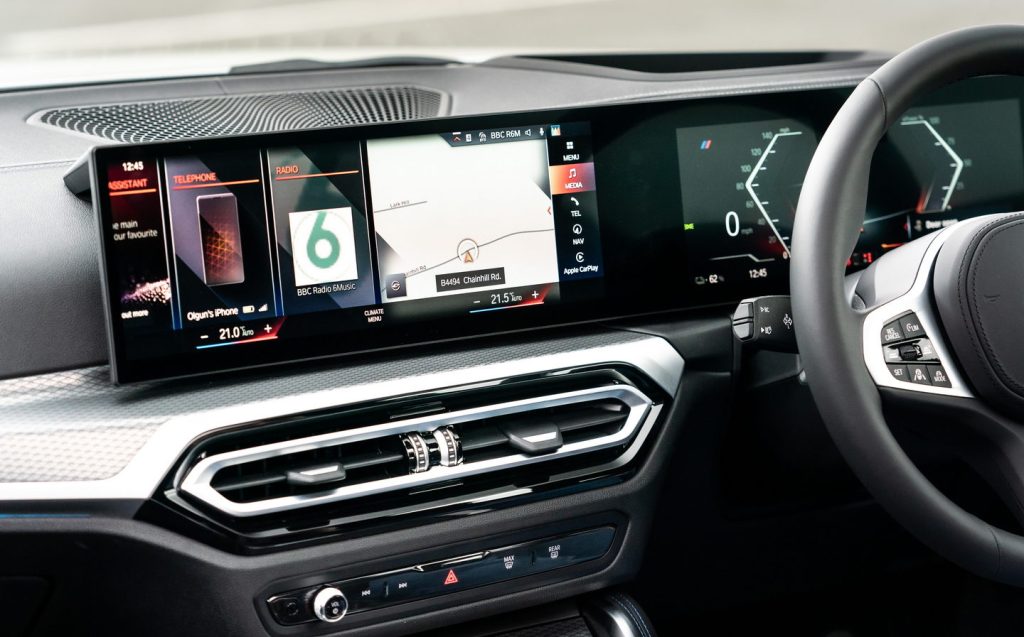
The digital instrument cluster is particularly impressive, thanks to its crystal clear display and easy configuration options, which make it much easier to pick what information you’d like to see in front of you. It is perhaps slightly over-styled but it’s still sharp and easy to read, even in bright sunlight.
Similar treatment has been applied to the central touchscreen, and the results are much the same. The menus are logical and the system responds quickly to commands, while the new screen feels sharper and brighter — not to mention larger — than in the old 4 Series.
Despite that, BMW has retained the iDrive rotary controller on the centre console, so once you’ve learnt your way around the system you can use it almost without looking — good news for the safety conscious, or those who simply dislike reaching across a massive touchscreen.
However, because BMW has shoehorned the climate control settings into the screen, there is a catch. Any time you want to change the temperature or fan speed or even the heated seat settings, you have to go into the climate sub-menu and prod around in there for a while. It’s a distracting exercise.
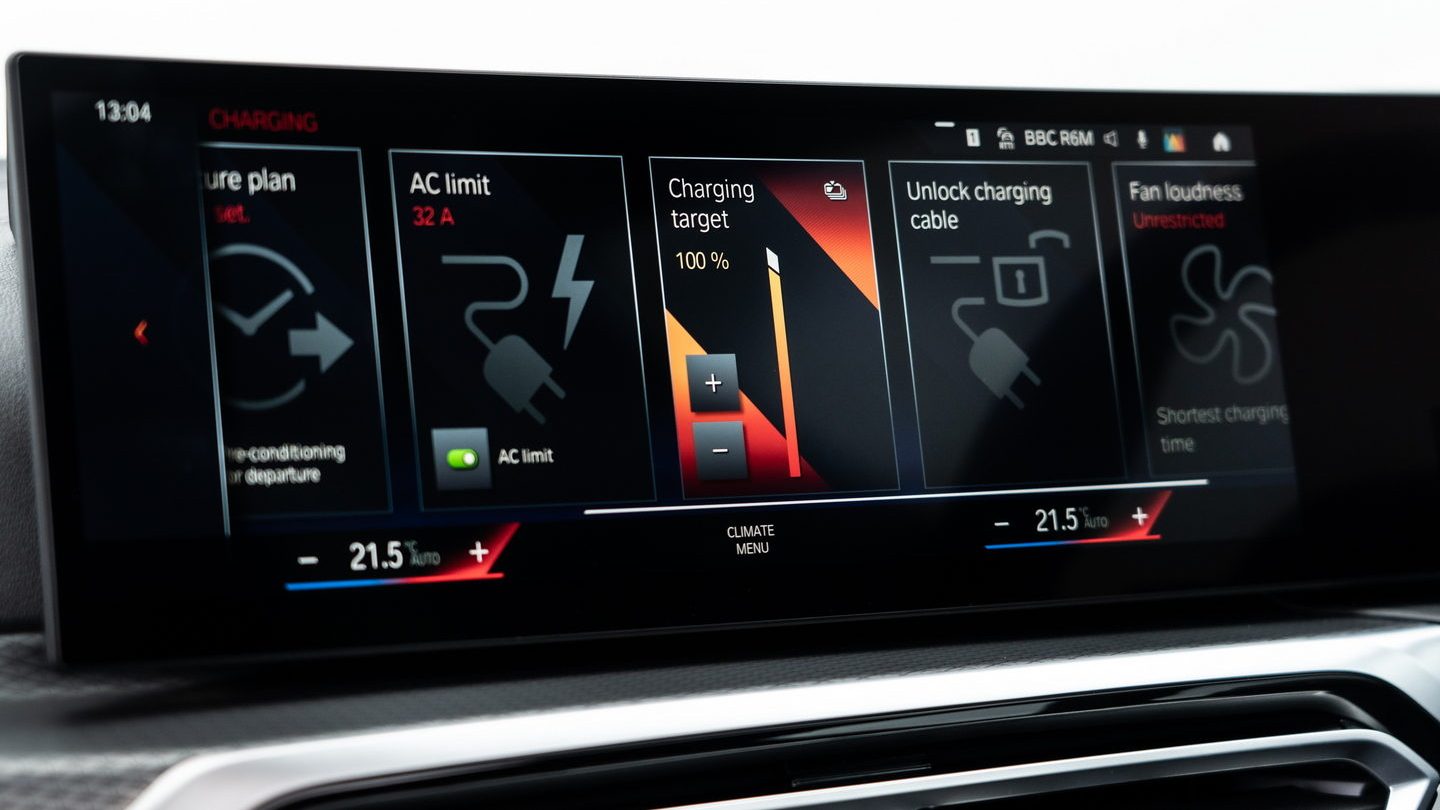
Perhaps that’s part of the rationale for BMW loading the i4 with safety equipment. You get all the usual stuff – cruise control; lane departure warning; autonomous emergency braking – as standard, but customers can add more through the options list.
These include the Driving Assistant Professional system, which aims to reduce driver workload on motorways by combining lane-keeping technology and cruise control to keep the car a safe distance from the vehicle in front and in the middle of its lane. The driver still has to be in charge but it’s a handy safety net in case they become distracted on long journeys.
Performance, charging times and range
The BMW i4 is available with a choice of three different powertrains. At the foot of the range is the eDrive35, which has a 282bhp electric motor that drives the rear wheels alone.
That’s fed by a 70.2kWh battery that gives the i4 enough juice to cover between 284 and 299 miles on a single charge — according to the official efficiency test. And, for those who like such statistics, it’ll get from 0-62mph in six seconds flat, so it isn’t exactly slow. As base models go, this is a good starting point.
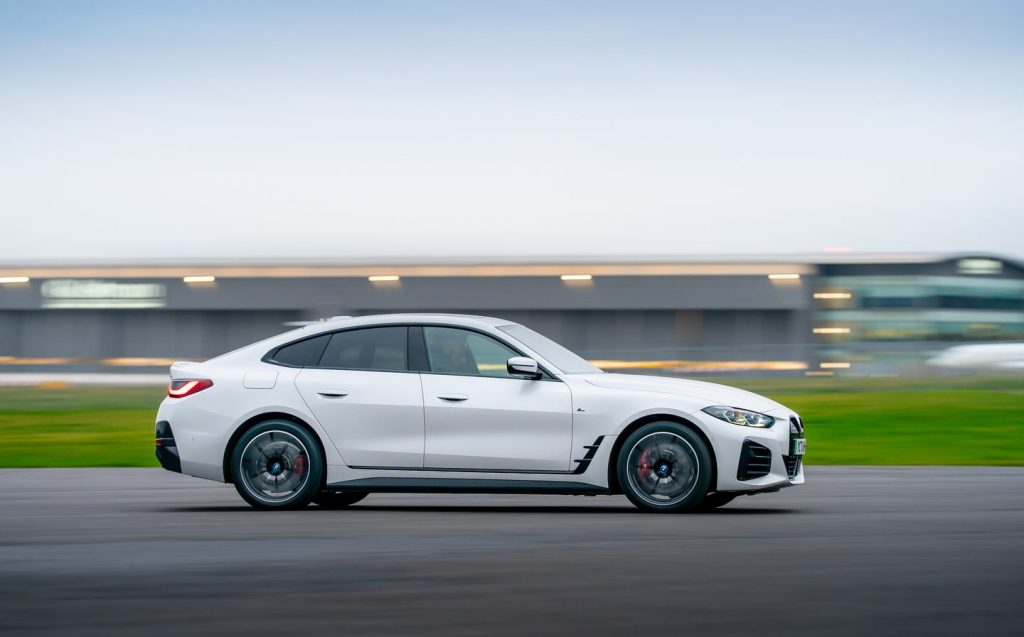
We tested the mid-range eDrive40 model, which is expected to be the top seller. Like the eDrive35 it has an electric motor that drives the rear wheels but the power output rises to 335bhp.
The battery is bigger, too, with a gross capacity of 83.9kWh, allowing the i4 to cover between 346 and 365 miles on a single charge in its most efficient guise.
Of course, these are official figures and owners are unlikely to achieve them in the real world, especially in colder weather and if they spend a lot of time on motorways (higher speeds really sap range). But owners should easily get more than 250 miles on any given day, which will be plenty for most.
For those who need to cover more distance, rapid recharges are available up to 205kW, which means the i4 can charge from 10 to 80 per cent in 31 minutes. Plug into a 11kW AC home wallbox and it’ll take eight-and-a-half hours to charge the battery from empty to 100 per cent, which means most will have a full battery every morning.

For the speed freaks, there’s the high-performance i4 M50 version, which uses two electric motors to provide 537bhp and all-wheel drive. That means 0-62mph takes just 3.9 seconds — almost two seconds quicker than the eDrive40. But it also means the 83.9kWh battery can’t take the car as far, and official range is somewhere between 257 and 318 miles. Target above 200 miles in the real world.
The one to go for
While many will be drawn to the M50 model, the eDrive40 is unquestionably the pick of the bunch. Although BMW likes to include fake motor noise, which sound tempting if you have a hot model, fake noises are usually best avoided so most will find there’s no difference in sound between the three variants, and actually the eDrive40 is more than quick enough. It’s noticeably faster than a 420d Gran Coupé, for example — and it has the greatest range of any car in the line-up.
Ride and handling
BMW likes to focus on the driving pleasure its cars provide, and nothing has changed in the company’s move towards electric power. As with the 4 Series, the i4 feels slightly firmer than a petrol-powered 3 Series, yet it still feels supple enough for a sporty coupé and soaks up the jagged edges of potholes while still letting you know they’re there. The faster you go, the better it gets, so the motorway ride is first-rate.
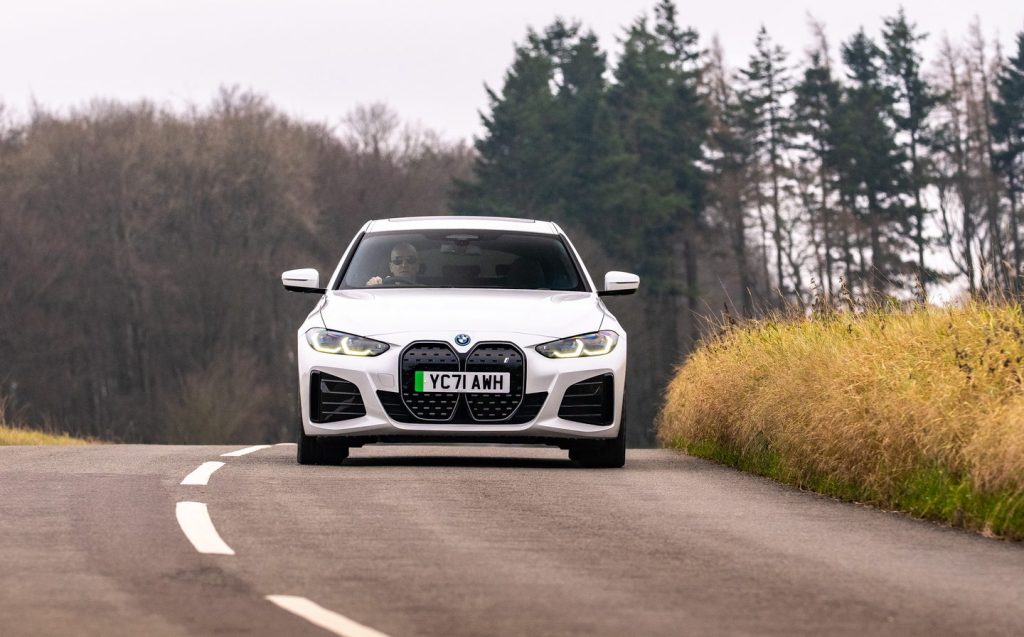
It also means you have plenty of feel for what’s going on beneath the wheels, and that’s good news for keen drivers. The i4 is remarkably agile in the bends, and though it always feels quite heavy compared with, say, a 420i Gran Coupé, it is still stable, planted and balanced. The steering is precise, if slightly over-assisted, and that means you can place the car perfectly every time.
There is a bit of body roll in corners, which is possibly a by-product of the 2.2-tonne kerb weight, but grip is ample and you can sharpen things up with the Sport mode, which also increases the fake motor sound and makes the ride slightly stiffer. Unless you’re really trying to squeeze the best from the i4 on your favourite back road, it all feels a bit unnecessary.
More helpfully, though, the relatively light steering means the i4 is easy to drive around town, and visibility isn’t bad at all, despite the coupé shape. The only weak spot really is at the back, but a reversing camera is standard equipment and that makes it easier to manoeuvre.
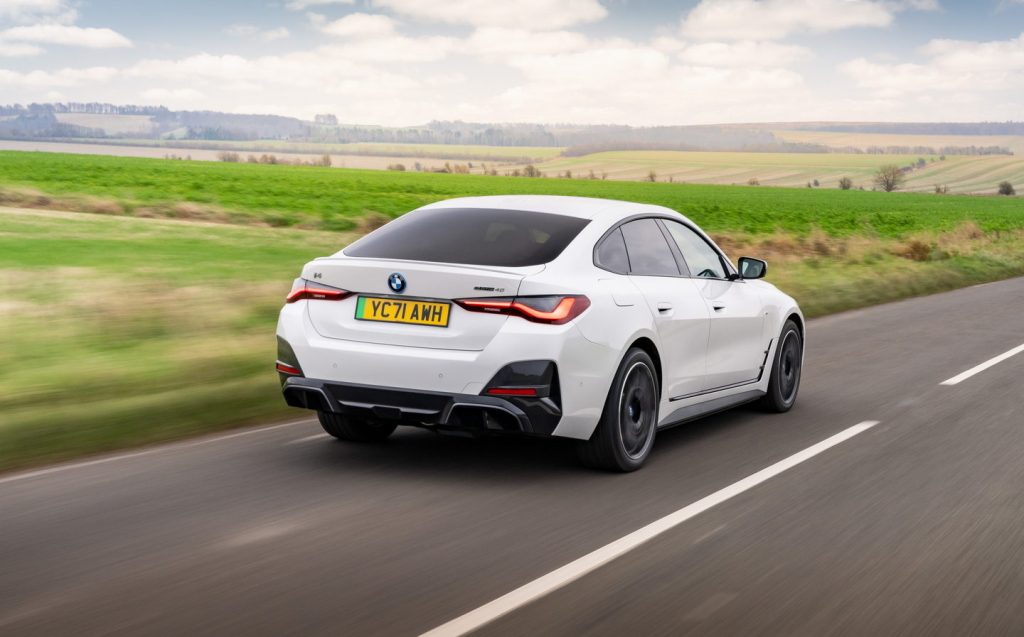
And for those who do lots of motorway miles, the pièce de résistance is the refinement. There’s very little noise from the motor, as you’d expect, while wind and road noise are kept in check, too. Admittedly, the same is true of even the diesel-powered 4 Series models, but the i4 takes refinement a step further and that, combined with the high-speed comfort, makes the i4 even more relaxing than most of its rivals.
Pricing and on-sale date
The cheapest i4 comes in at under £50,000, which makes it just over £5,000 more expensive than the cheapest 4 Series Gran Coupé, and running costs will be much lower — especially for business users who benefit from the 2 per cent benefit in kind rate for electric vehicles.
However, the retail price gap between the cheapest i4 and the cheapest Polestar 2 is almost exactly the same, which makes the BMW slightly less impressive value for money than one of its direct (and beautifully-appointed) rivals.
That said, you get plenty of equipment as standard in the BMW, so the i4 comes with part-leather upholstery, a reversing camera and two-zone climate control, as well as BMW’s latest-generation touchscreen infotainment system.
Smart two-tone alloy wheels are standard, too, and you get parking sensors at the front and rear.
What’s more, you get the exceptional BMW build quality that’s missing from the Tesla Model 3.
Verdict: BMW i4 review
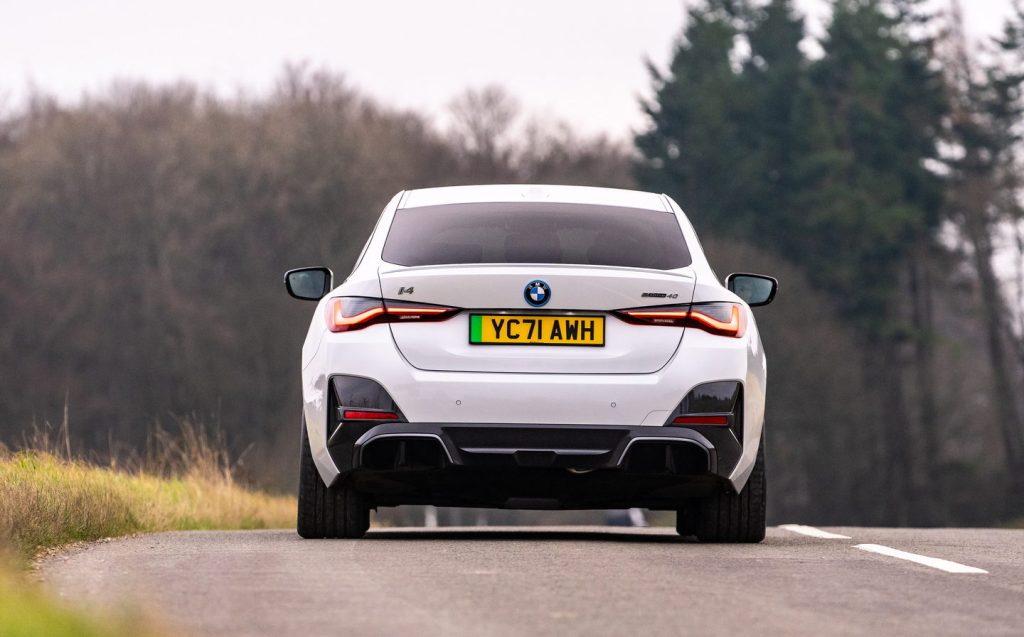
The BMW i4 is, in our view, one of the best electric cars on the market, and the mid-range eDrive40 model is the i4 to have. It combines everything that makes the 4 Series Gran Coupé great, then merges it with a first-rate electric powertrain.
All of which means you can forget Tesla, because the i4 is ahead in terms of quality, handling and ride comfort. The i4 is way better than the Polestar 2 on the latter front, too, though as usual Mercedes is a front-runner on comfort with the EQE.
The i4 is really only held back by rear seats that lack a little headroom for taller passengers. Were it not for the Porsche Taycan and Audi e-tron GT, this would be the best electric saloon or coupé money can buy.
Related articles
- After reading our review of the BMW i4 you might be interested to see our review of a prototype of the 2023 BMW XM
- Refreshed BMW X7 revealed with updated styling, revamped interior and mild-hybrid assistance
- Or, check out the best luxury cars to buy
Latest articles
- Skoda Enyaq 2025 review: Same book, different cover for electric SUV
- Lewis Hamilton wants to design a modern day Ferrari F40 with manual gearbox
- Dacia Bigster 2025 review: The ‘anti-premium’ family SUV that punches above its weight
- Your car’s worn tyres could be being burnt illegally in India, investigation reveals
- Open-top 214mph Aston Martin Vanquish Volante is world’s fastest blow-dry
- F1 2025 calendar and race reports: The new Formula One season as it happens
- Alfa Romeo Junior Ibrida 2025 review: Hybrid power adds an extra string to crossover’s bow
- Top 10 longest-range electric cars: all with over 400 miles per charge (officially)
- Renault 5 Turbo 3E ‘mini supercar’ confirmed with rear in-wheel motors producing 533bhp … and insane levels of torque


